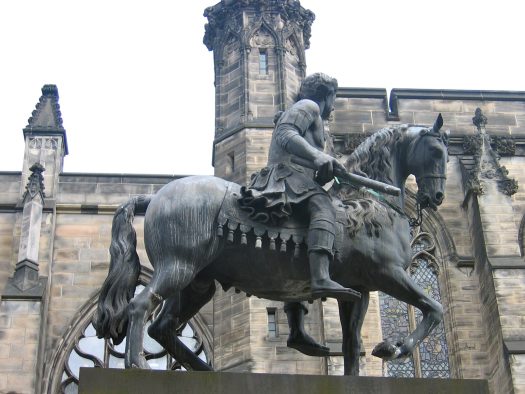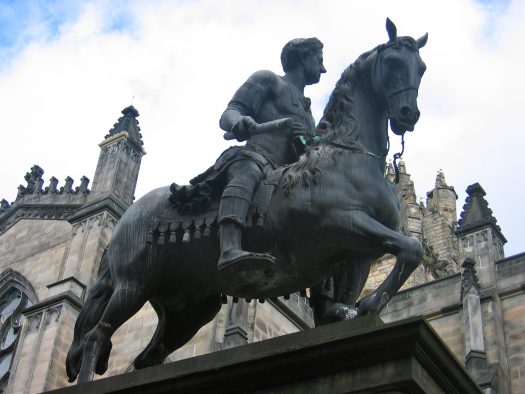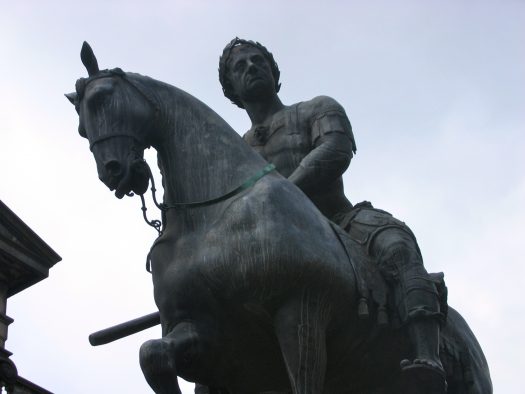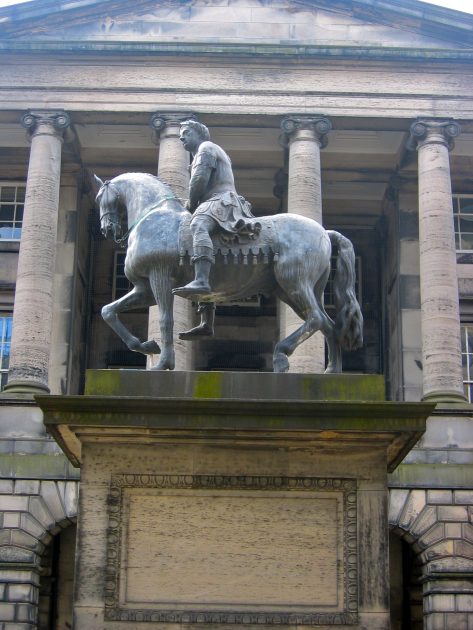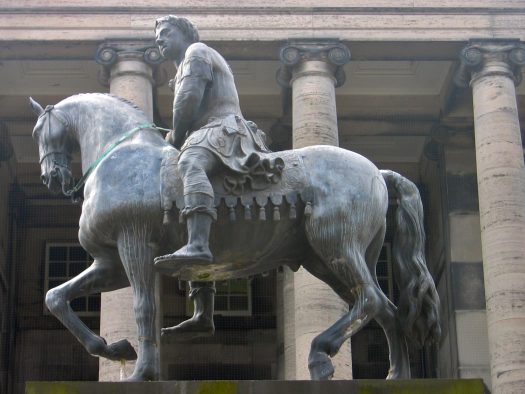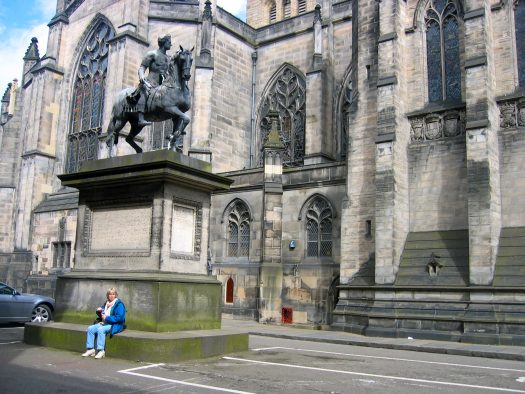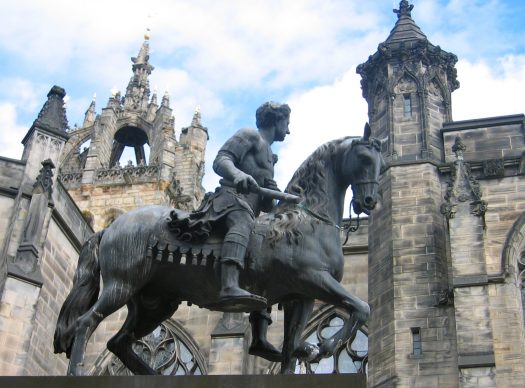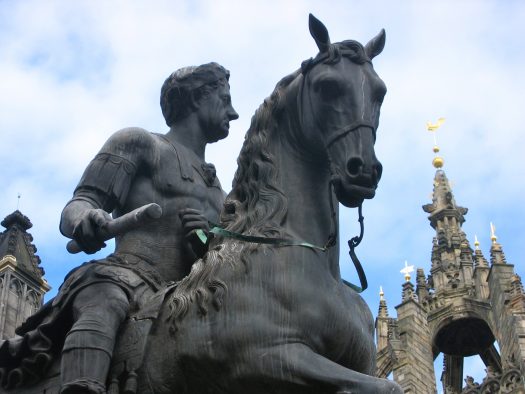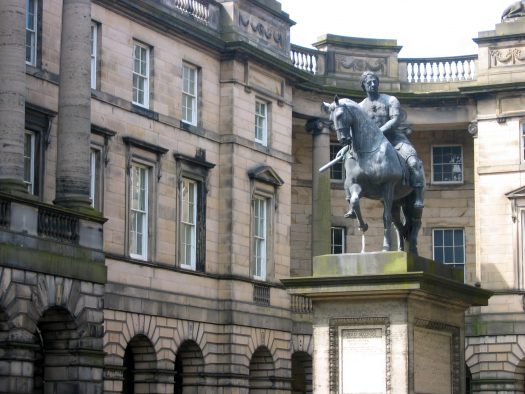See original.
There are two equestrian statues of Charles II, a bronze one in Windsor (1680) and a lead one in Edinburgh (1685). The statue of the king in Roman dress without stirrups is clearly inspired by the Marcus Aurelius example in Rome, as well as by the Charles I statue in London. As recently assessed, both statues were taken from the same mould, produced by Grinling Gibbons, a renowned wood carver, born and educated in Holland.
The Edinburgh version on the Parliament Square in front of St Giles’ Cathedral is made of lead. It has distorted over time, and details such as a scabbard and sword have been lost. The Edinburgh version has often been repaired, most recently in 2010 when a state-of-the-art supporting framework was installed inside. On this occasion, the sword was also reinstalled as one of the items based on the example in Windsor. The figure in bronze in one of the courtyards of Windsor Castle is far more upright and makes it very apparent how the lead figure in Edinburgh had slumped forwards.
